Is your office space becoming overly cluttered with disorganized paper files?
Designing a home office filing system will help you bring order to the disorder by keeping important documents methodically arranged. Introducing home file organization categories is a systematic way to group household documents, ensuring efficient management and easy access to everything from taxes to personal files.
In this guide, I will instruct you step by step to design a filing cabinet with labeled folders and subdivided containers. Additionally, I will provide home filing system ideas to help you manage paper clutter effectively.
Introduction to Filing
Filing is an essential part of maintaining an organized and clutter-free home or office. A filing system, also known as a file system, is a way of organizing and storing documents, papers, and other important information.
Home filing systems are especially useful for organizing household documents, helping to create a functional home office or streamline overall household organization. It typically consists of a filing cabinet, file folders, and a system for categorizing and labeling documents. By creating a structured filing system, you can ensure that your important papers are always within reach and easy to locate.
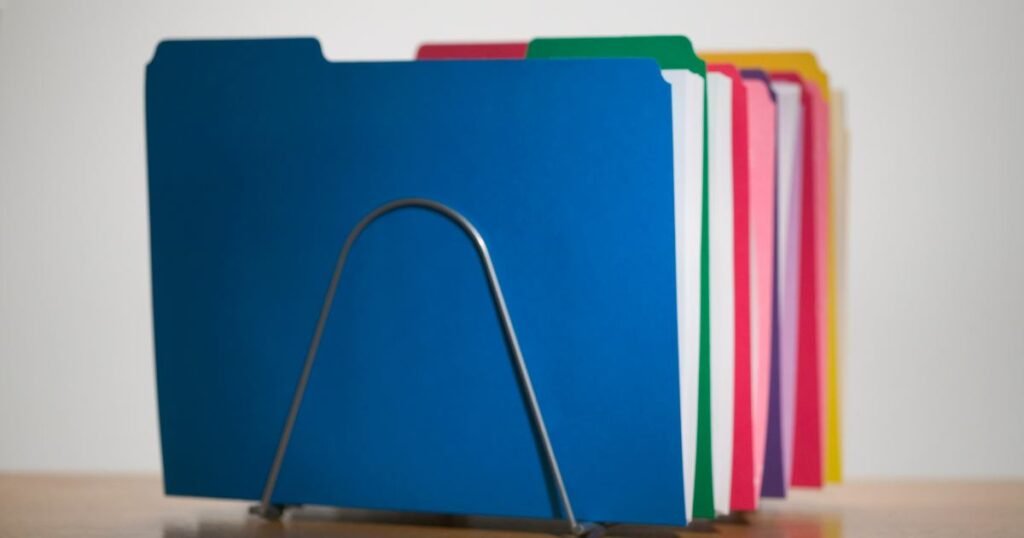
Benefits of a Home Filing System
A well-organized home filing system offers a host of benefits that go far beyond simply reducing paper clutter. By implementing a structured filing system, you can keep your important documents, such as financial records, bills, and personal paperwork, neatly organized and easy to find.
This not only saves you valuable time searching for misplaced papers but also helps reduce stress and frustration in your daily life. With a home filing system, you can quickly access the documents you need for tasks like paying bills, filing taxes, or managing household records, making your home filing process more efficient and less time consuming.
Additionally, storing sensitive information in a secure and organized manner helps protect your privacy and ensures that irreplaceable documents are always within reach when you need them.
Ultimately, a home filing system supports better financial planning, helps you stay on top of important deadlines, and brings a sense of order and peace of mind to your home.
Establishing a Functional Home Filing System
Following simple strategies will ensure that your document management systems eliminate paper clutter at home.
Choosing the Right Filing Cabinet
Selecting the right filing cabinet is a key step in setting up an effective home filing system. Start by assessing the amount of space you have available and the volume of documents you need to store.
Depending on your case, choose document filing boxes or magazine holders if you have a lower volume of documents, while cabinets or a filing cabinet will be better suited for the higher volume of documents.
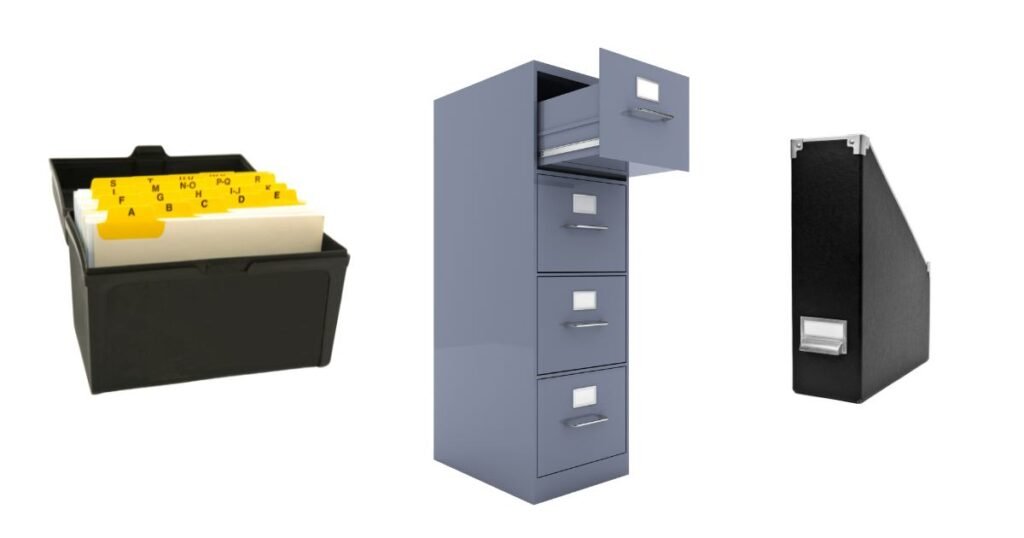
When it comes to choosing a filing cabinet, there are several factors to consider. First, think about the size of the cabinet and how much space you have available. In addition, filing cabinets come in various sizes and styles, including vertical file cabinets that fit into tight spaces, lateral file cabinets that offer wider drawers for easy access, and mobile file cabinets that can be moved around as needed.
You’ll also want to consider the type of documents you’ll be storing and the level of security you need. For example, if you’ll be storing sensitive or irreplaceable documents, you may want to choose a cabinet with a lock.
Look for a filing cabinet with sturdy construction, smooth-gliding drawers, and a reliable locking mechanism to keep your files secure. Adjustable shelves or dividers can help you customize the interior to fit your file folders and hanging files, making it easier to keep your documents organized.
Whether you choose a compact file box for a small room or a larger cabinet for a dedicated office, the right filing cabinet will make your home filing system more efficient and accessible.
Home Filing System Supplies
To create and maintain a successful home filing system, having the right supplies is essential.
Start with a selection of file folders and hanging files, which are perfect for sorting and storing your documents in a filing cabinet or file box. File folders come in different sizes, such as letter and legal, and can be used to group similar papers together. Hanging files are designed to fit inside filing cabinets and make it easy to organize your files by category.
Use a label maker or pre-printed labels to clearly identify the contents of each file folder, ensuring you can quickly find what you need.
Other helpful supplies include a file box for portable storage, a shredder for securely disposing of sensitive papers, and a paper tray to keep incoming documents organized before filing. With these supplies on hand, you’ll be well-equipped to keep your home filing system organized and clutter-free.
Create Main Categories
As far as your home is concerned, sorting your files into a main category and broad categories would be the best approach. Here are some examples of filing categories:
- Personal (identity documents)
- Home and Property (mortgage paperwork, maintenance records)
- Medical (insurance claims, medical history and prescriptions)
- Education (academic records, transcripts, certificates)
- Financial (statements, returns, investments, retirements)
- Tax (tax returns, forms, and recepits)
- Sentimental
Establish Subcategories
Decide on subcategories within each main heading or category by using individual labeled file folders. For example, under Financial, you could have monthly bills, bank statements and receipts. Make sure that all labeling is clear and consistent, and consider color-coding for added distinction.
Implement a System for Ongoing Organization
Stick to a schedule for regularly filing new documents and outdated ones. You could consider designating a specific time once a month to go through all files and check the home filing system to make sure it is functional and clutter-free.
Essential Categories for Your Home Filing System
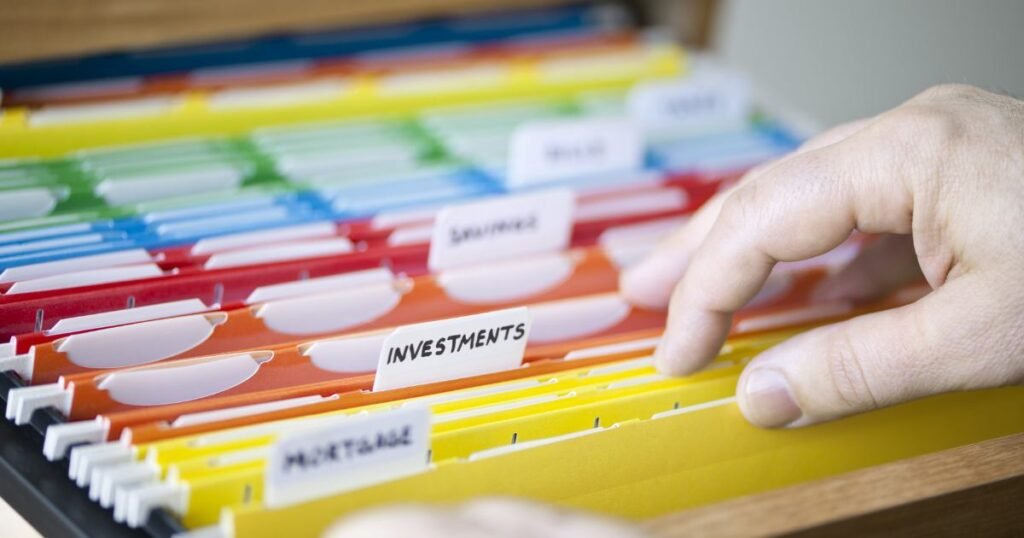
To effectively organize your documents, structuring a filing system starts with the division into the various home filing system categories. An optimum filing system aids in keeping vital documents organized and accessible while reducing clutter. Here are important sections for a home filing system:
Personal Documents
These are very critical so they need to be stored securely, They include:
- Birth Certificates
- Social Security Cards
- Passports
- Marriage Certificates
- My Medicine List
You can approach an office supply-service about getting fireproof file cardboard boxes for these papers, especially to protect important health and identification documents. You can consider store these most important files in a separate container for easy access and carry in case of emergency.
Financial Records
This section would contain:
- Monthly bills
- Bank statements
- Investment and stock certificates
- Financial planning documents
- Tax documents
Financial planning documents are a crucial component of any home filing system. Keeping these documents organized ensures you can easily access important information when you need it, whether for budgeting, tax preparation, or insurance claims. Create a dedicated category in your filing system for financial planning, and use subcategories to further organize your records. For example, you might have separate file folders for bank statements, investment records, insurance policies, and tax returns. Clearly label each folder and consider using color coding to distinguish financial documents from other categories. By organizing your financial planning documents in this way, you’ll have a reliable system for tracking your financial life, making it easier to stay on top of bills, plan for the future, and respond quickly to any financial questions or needs that arise.
Tax documents are an important part of any filing system. These documents include tax returns, W-2 forms, and receipts for deductions. It’s essential to keep these documents organized and easily accessible, as you may need to refer to them during tax season or in case of an audit. Consider creating a separate category for tax documents in your filing system, and use subcategories to organize documents by year or type. You can use a label maker to label your folders and make them easy to find. A well-organized tax filing system can help reduce stress and make tax season easier to navigate.
Home and Property
Create a separate category for the home, auto & other important properties.
- Mortgage documents
- Home Insurance Policies
- Utility bill documents
- Receipts for the renovated works
- Warranties and Manuals
- Auto-related documents (repair and maintenance records, titles, insurance)
Family Records – Medical and Educational
Designate separate folders for every individual in the family to assemble documentation:
- School documents and report cards
- Immunization records
- Important Certificates
This method of systematization allows every member of the family to access critical information on each person quickly.
Sentimental Documents and Keepsakes
Sentimental documents and keepsakes, such as family photos and cards from friends, are an important part of the filing system. These documents are often irreplaceable and hold significant emotional value. Consider creating a separate category for sentimental documents in your filing system, and use subcategories to organize documents by type or family member. You can use a file box or a home filing cabinet to store these documents. It’s also a good idea to make digital copies of these documents and store them in a secure location, such as an external hard drive or cloud storage service. This can help ensure that your sentimental documents are safe and easily accessible, providing peace of mind that these precious items are well-protected.
By creating these essential categories, you will be able to establish a home filing system that is not only effective, but also organizes your important documents in a structured manner that can be retrieved quickly. Also try adjusting it based on your preference, for example, you can keep the most important items in one place.
Arranging Your Documents with File Folders
Filing your personal documents makes it easier to ensure that everything is properly filed, and using file folders makes the process visually appealing. Follow this guide to optimize document arrangement.
Arrange by Color
Consider arranging documents by main type as well as using color banding which will simplify document retrieval. Assign hues to the folder of each family member, saving time when locating specific documents.
Label and Store
Take a label maker and write the clear title for each file, arrange the folders inside a filing cabinet. Set frequently accessed documents in closet drawers, with less frequent paper stored at different heights. Utilizing a drawer system can help in organizing various file types efficiently.
Streamlining Your Home Paperwork with Hanging Files
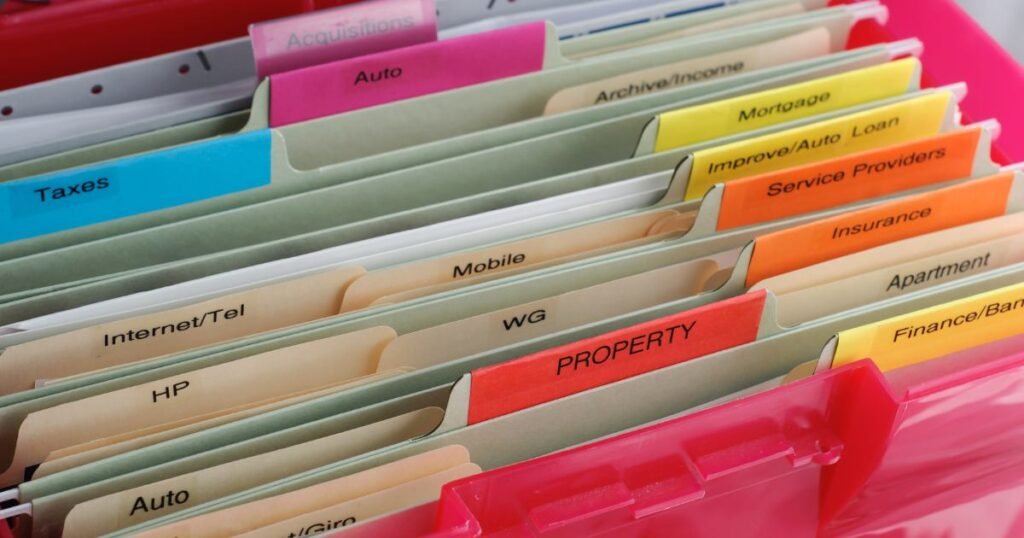
The organizational task of filing at home may seem monumental, but the use of a hanging folder as a filing aid can minimize paper chaos. Establishing a proper filing scheme will facilitate smooth sorting as well as subsequent retrieval of the documents.
Creating an Effective Filing Structure
Form the top level folders based on key documents such as bank statements, insurance policies, and personal identification. Be sure to purchase colored hanging folders to aid in easily locating the needed documents visually. Make use of index folders to create subsections under every category to systemize the papers further.
Labeling for Easy Retrieval
Make provision for folder labels by employing either a label maker or clear handwriting. Employ a proper pen to mark the folders with range and elaborate titles following the main document. If followed properly, this step alone can eliminate wastage of time and other resources that could be spent while looking for various documents. Employing a sequential numbering and alphabetical strategies of filing can be essential time savers when dealing with many documents.
DIY Home Filing System
Building your own DIY home filing system is a practical and budget-friendly way to take control of your paperwork. Begin by gathering essential supplies like file folders, hanging files, and a label maker. Decide on the main categories and subcategories that make sense for your household, such as financial records, personal documents, and household papers. Use your label maker to create clear, easy-to-read labels for each file folder and hanging file, and consider color coding to visually separate different categories. Arrange your folders in a filing cabinet, file box, or other storage solution that fits your space and needs. Make it a habit to regularly file new documents and purge outdated papers to keep your system organized. You can also customize your DIY home filing system by adding new categories, using different types of folders, or adjusting your setup as your needs change. With a little creativity and consistency, you’ll have a home filing system that keeps your documents organized and your space clutter-free.
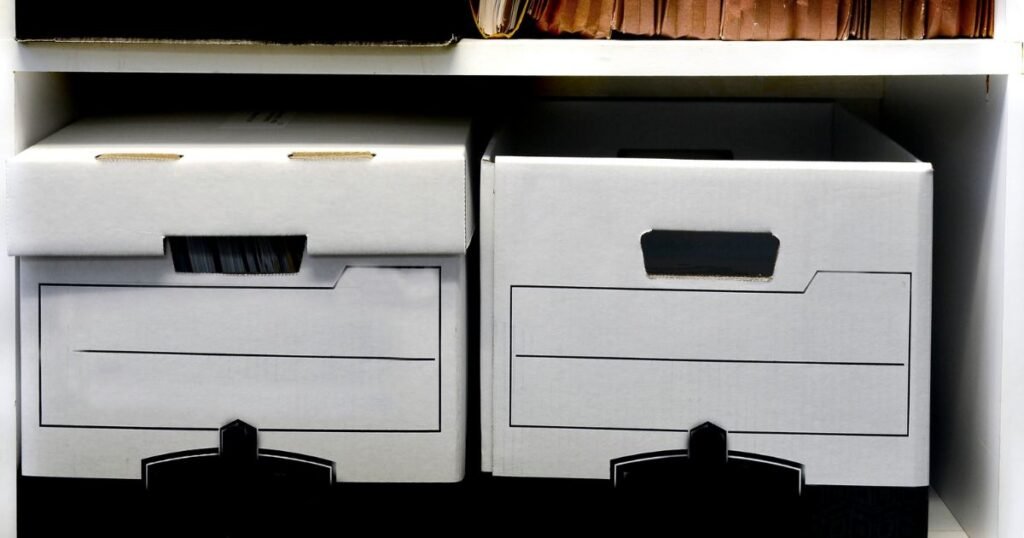
Maintaining an Efficient Home Filing System
Your home filing system does not just stop with organizing; it should make sense for your specific needs and circumstances, and it is an active cycle that needs attention and care every now and then. Here are some methods that might help you preserve an efficient system:
Regular Review and Purge
Make it a point to go through your files and documents at least once a month to collect and throw files that do not need to be paid attention to. Doing this reduces clutter while also making your filing cabin easy to reside in. Make it a point to bring attention to paid bills, receipts, and out of date documents which are older than one year.
For more tips and guides on maintaining an efficient filing system, check out our latest post.
Update File Folder Labels
There are so many things in life that need adaptation, so do yours. Filing categories need adaption in accordance to your personal and business needs or requirements. It would be very beneficial to analyze the folder labels and draft new or adjust the previously created ones so that they match your filing preferences. A label maker is one handy piece of tech that can greatly help configure well organized professional labels.
Implement a Color-Coding System
Prevent comprehensive slow file retrieval by assigning certain colors to various categorical tiers based on different rooms in your home, as per level of priority for speedy and serve as visual aids. Color coding effortlessly makes it easier for documents to be located and retrieved when needed for.
Digital Backup
For maximum security, consider scanning significant documents and saving digital copies to secure cloud services. This approach mitigates the need for physical storage space while providing a safeguard in the event your files not only get damaged but lost. Make sure to arrange your digital files according to the categories in your physical filing system. Also try to switch to digital bills to make paperwork easier and reduce paper waste.

Home Filing System Security
Home filing system security is an important consideration for anyone looking to protect their sensitive documents and information. There are several steps you can take to secure your filing system, including using a lock on your filing cabinet, storing sensitive documents in a safe or secure location, and using password protection on digital documents. You can also use color coding and color-code your folders to make them easy to identify. Additionally, consider using a fireproof safe or a secure online storage service to store sensitive documents, such as financial records and identification documents. By taking these steps, you can help protect your sensitive information and ensure that your filing system is secure.
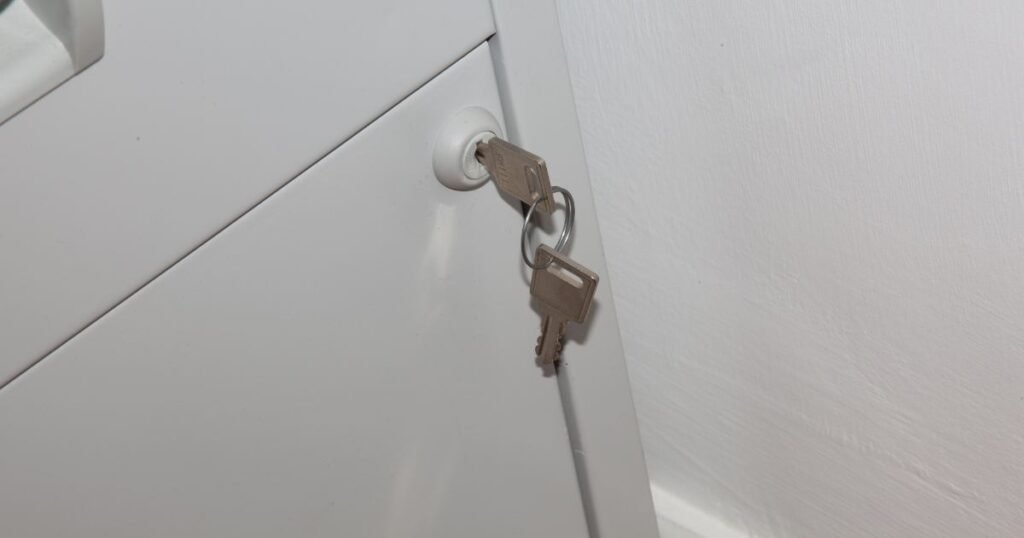
Developing a home filing system with main categories and sub-categories, arranged through color-coded hanging folders alongside labeled file folders, has the potential to significantly simplify the management of household documents. It is crucial to establish a consistent approach for retrieving and storing files to streamline the process and eliminate paper clutter. Here are a few ideas to help you maintain an efficient system, such as using magazine holders and filing boxes, and regularly decluttering.





